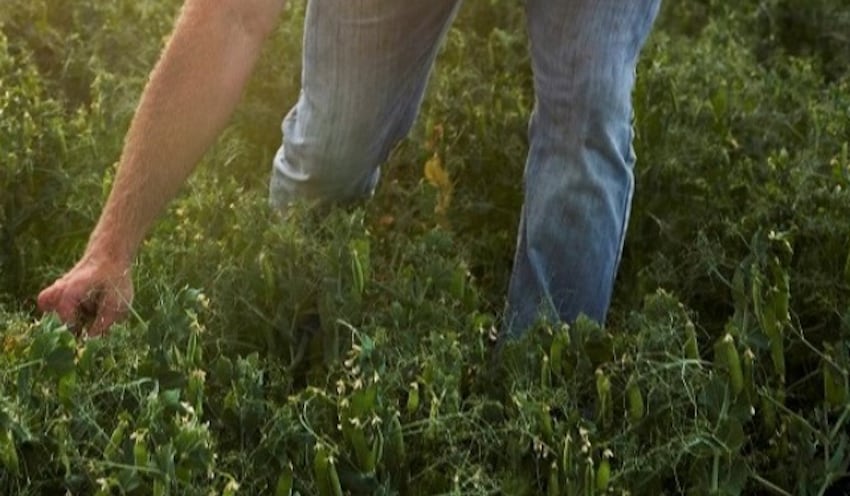PURIS has long been known for its pea breeding activities that have yielded a better tasting pea protein. The ingredient attracted the attention of Cargill, which has to date invested $100 million to help PURIS increase its protein production capacity.
With that investment, by the end of 2020 PURIS will have three facilities devoted to pea protein production. PURIS offers both non GMO and organic options on its ingredients.
Making more use of land, and of the peas, too
One of the issues with ramping up organic ingredient production in the United States is the need for fields to go through a three-year transition period, which is an economic burden for farmers. Because peas can be grown as a cover or rotational crop, PURIS CEO Tyler Lorenzen said the company can make use of existing organic acreage. While the company owns it processing facilities, it contracts with farmers to grow its raw materials.
“Since we have started we have increased our organic acreage more than 20 times,” Lorenzen said. “Since you can leverage peas as a cover crop, you don’t have to create more organic acreage. We now have organic pea fields from Montana to Georgia.”
Just as PURIS is leveraging the leftover potential of existing organic acreage, it is also harnessing the leftover potential of the pea itself.
At the recent SupplySide West trade show, PURIS showcased its new pea starch ingredients which make use of portions of the legumes that are left over from protein extraction.
One use for the pea starch is as a binder in gummy formulations. This could enable a client to make a completely vegan gummy, something that can’t be done with the usual gelatin base, which is derived from the skeletons of cattle or other animals. John Getzinger, chief marketing office for PURIS, said the new ingredient has some cost advantages, too.
“The cool part about pea starch is that it is grown
in the USA and is less expensive than tapioca starch which also requires importation from Asia or Africa,” he said.
Low GI sports nutrition ingredient
A form of the ingredient that PURIS is branding as Pea Starch RTE is being aimed at sports nutrition formulations. It’s a low glycemic index ingredient that can help support athlete’s energy and recovery needs while avoiding blood sugar spikes.
Lorenzen, who is a former NFL player, knows something about what benefits athletes the most.
“Athletes need carbs to restore the glycogen in their muscles. But they don’t want something with a high glycemic response all the time,” he said.
In addition, Lorenzen said initial testing on the ingredient shows that it could work with consumers’ desire to promote ketosis, or fat burning.
“We did some initial testing and we think with its very low glycemic response, it could be a way to get carbs without taking you out of ketosis. There is a long way to go on this, but we think it holds promise,” he said.
Environmental benefits of pea cultivation
While unveiling the new ingredients, PURIS is reemphasizing the environmentally favorable image of peas. Farmers have known since the Middle Ages that using peas as a rotational crop boosted the fertility of their fields.
They didn’t know that what the peas were doing was fixing nitrogen in the soil, something that all legumes do. It seems some of that ancient wisdom went by the board when artificial nitrogen fertilizers became widely available. But excess nitrogen, and using too much fertilizer in general, has had negative effects on waterways.
The grave consequences of the alteration of the nitrogen cycle were already identified more than 20 years ago by noted Canadian ecologist Vaclav Smil. Nitrogen-rich agricultural runoff spurs excess growth of algae, which is one of the major contributing factors to the oceanic dead zones observed in coastal waters around the world. The problem has only accelerated in the two decades since Smil first sounded the alarm.
“Peas fix nitrogen by taking it from the air and converting it to usable fertilizer,” Lorenzen said. “Farmers growing peas can add up to 70 pounds of nitrogen to the soil per acre of production. Peas can reduce the amount of nitrogen needed on their farms. With the reduction in applied nitrogen, fertilizer runoff can be reduced, keeping our waterways and eventually our lakes and oceans cleaner.”

